Steel Markets

North American Automotive Production Down in December
Written by Peter Wright
January 14, 2019
Auto production in North America exhibited the normal slowdown in December.
This is a new report using LMC Automotive as the data source for automotive assemblies in the U.S., Canada and Mexico. The breakdown of assemblies is “Personal” (cars for personal use) and “Commercial” (light vehicles rated at less than 6.0 metric tons gross vehicle weight; heavy trucks and buses not included).
In this report, we will briefly describe light vehicle sales in the U.S. before reporting in detail on assemblies in the three regions of North America.
U.S. Vehicle Sales: Economy.com summarized the year-end sales results as follows: “New vehicle sales finished the year strong with 17.6 million SAAR units in December. Although we forecast last January that new vehicle sales would moderate to 17.1 million units in 2018, the market was exceedingly strong and closed at 17.3 million units for the year, up 0.3% from 2017. The auto industry can safely celebrate the end of a good year and enter 2019 with restrained optimism, mindful of challenges that lie ahead.”
Figure 1 shows auto and light truck sales since January 2004. In December, total sales were 1.2 percent lower than they were in December 2015. Light trucks that include pickups, SUVs and crossovers have been surging at the expense of cars for four years. The mix in December was 69.7 percent light trucks and 30.3 percent autos. In 2018, import market share peaked at 23.4 percent in April and ended the year at 22.2 percent in December, which was down from 22.7 percent in January as shown in Figure 2.
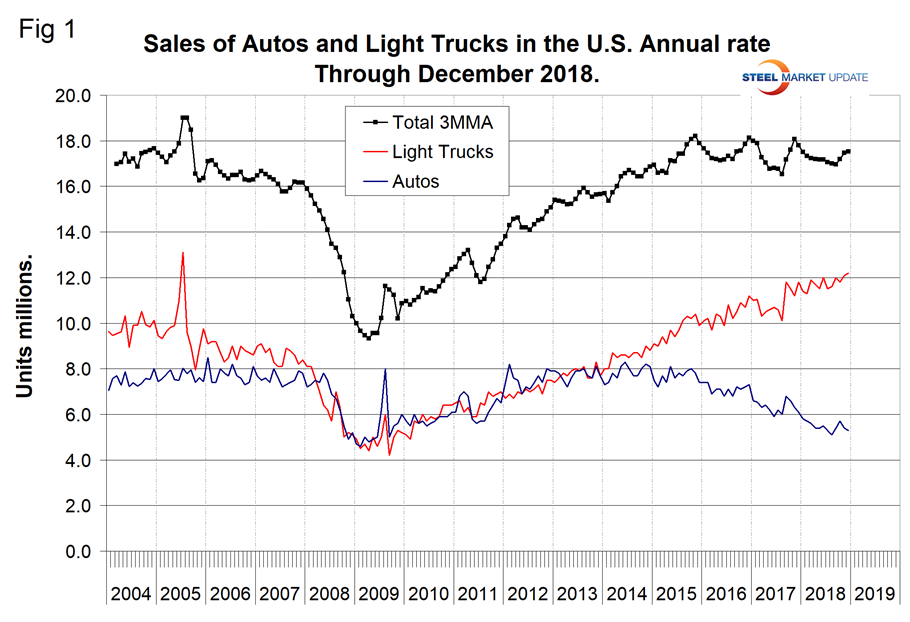
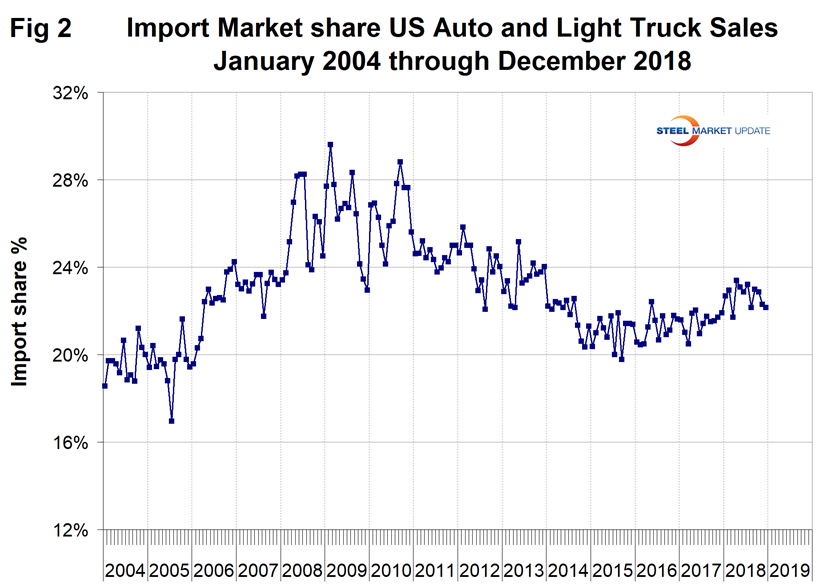
North American Assemblies: Total light vehicle (LV) production in North America in December was at an annual rate of 13.8 million units, down from 17.17 million in November. On average since 2007, December’s production has been down by 18.0 percent from November. This year production declined by 19.6 percent, therefore fairly normal. Figure 3 illustrates the seasonality of production on average since January 2007. Year to date through December 2018, production was down by 0.2 percent from the 12 months of 2017. Note that production numbers are not seasonally adjusted; the sales data reported above are seasonally adjusted.
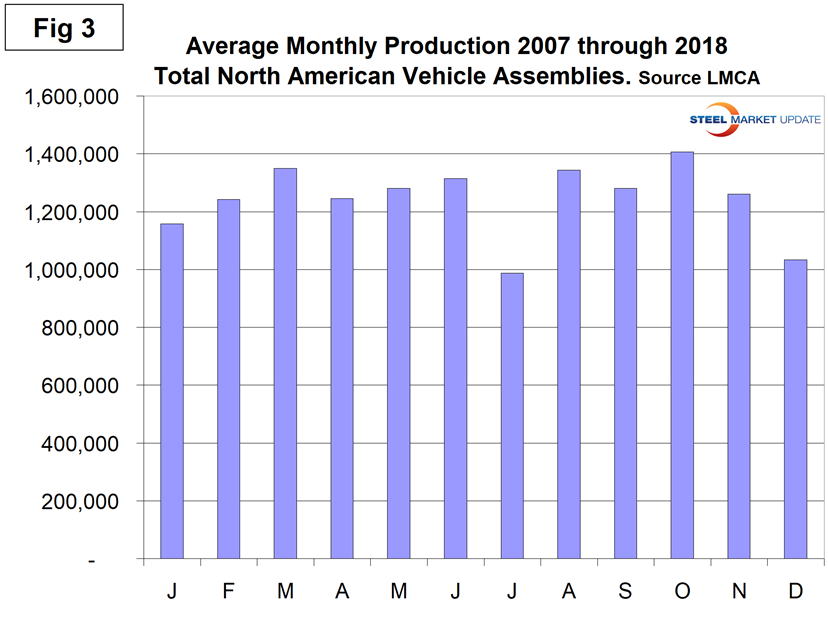
There has been a gradual slowdown in production since August 2017, which has now almost stabilized as indicated by the brown bars in Figure 4.
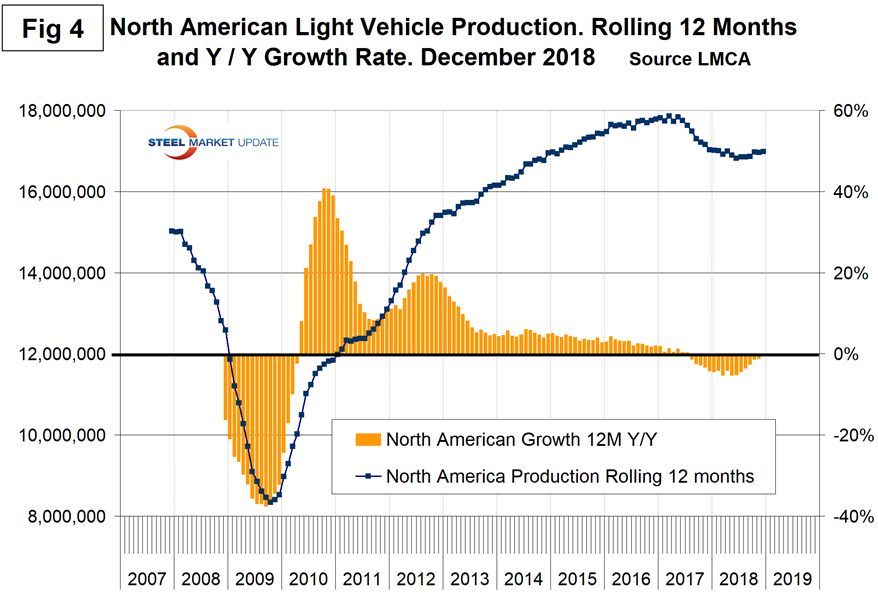
Table 1 is intended to be a short time snapshot of assembly by nation and vehicle type. It breaks down total North American personal and commercial vehicle production into the U.S, Canada and Mexico components and the three- and 12-month growth rate for each. At the far right, it shows the momentum for the total and for the three nations. Overall momentum for both personal and commercial vehicles is positive indicating that the market is strengthening. In the fourth quarter of 2018, Mexico experienced a year-over-year contraction in both personal and commercial vehicle production. Note, there are blank cells for Canadian commercial production; see explanation below.
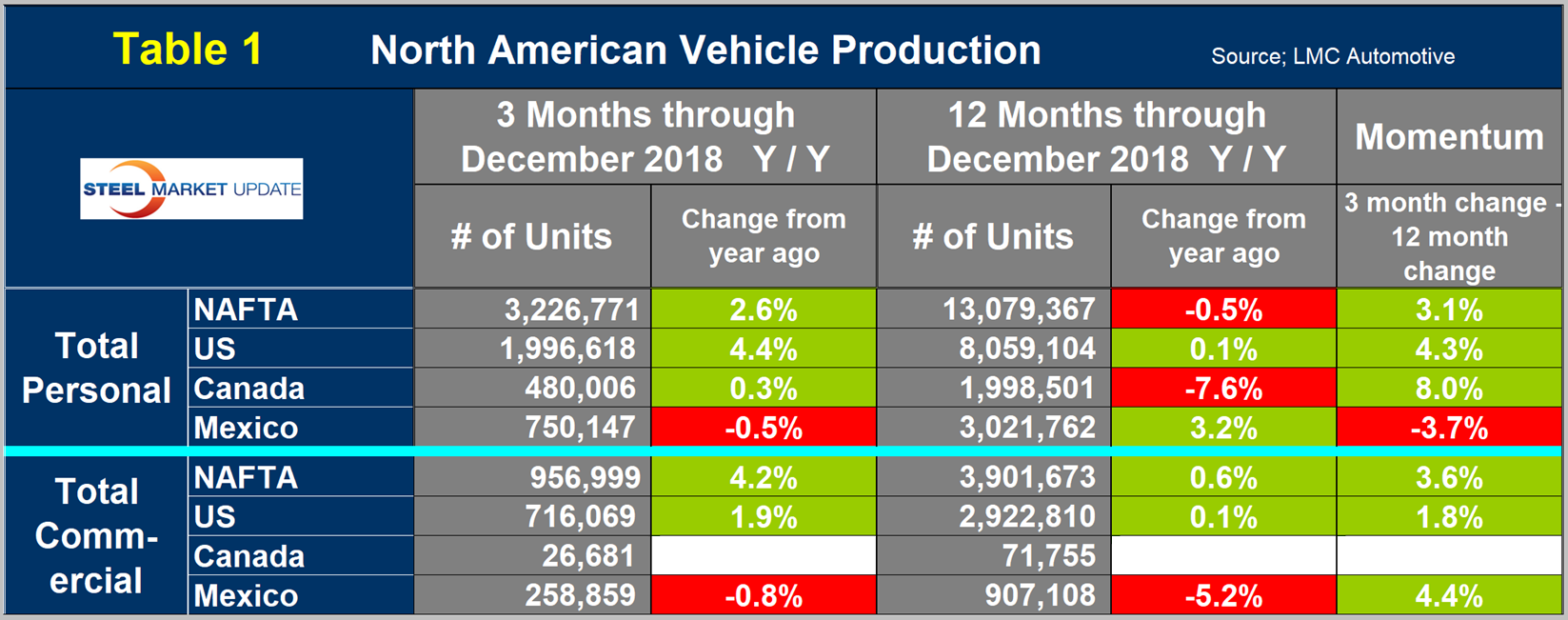
The longer-term picture is shown in the following charts by vehicle type and nation.
Figure 5 shows the total personal vehicle production for North America and the total for each nation.
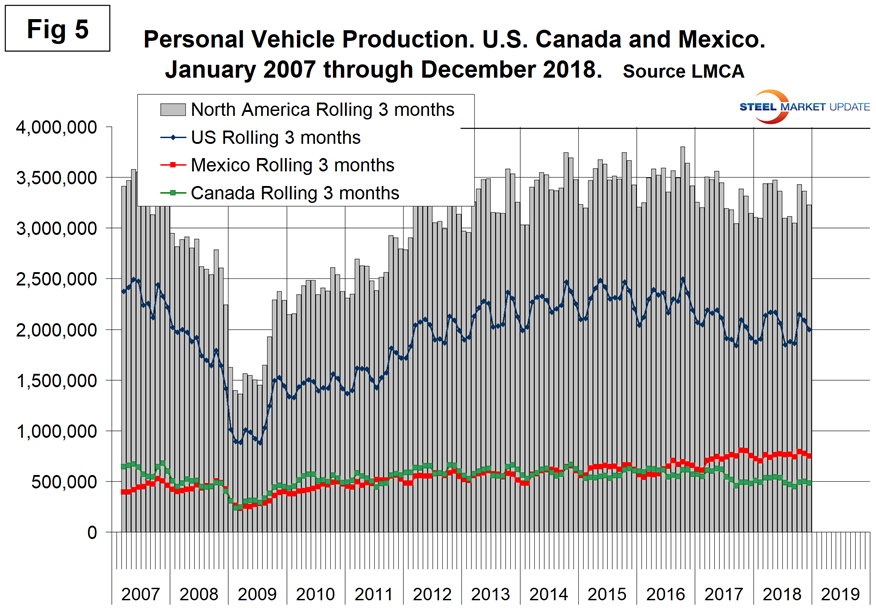
Figures 6, 7 and 8 show the production of personal vehicles by nation and the year-over-year growth rate for each. Figure 9 shows the production share for each nation. Production in the U.S. and Canada has declined since 2015 as Mexico has increased. The Mexican share rose from 17.2 percent in late 2014 to 23.2 percent in December 2018.
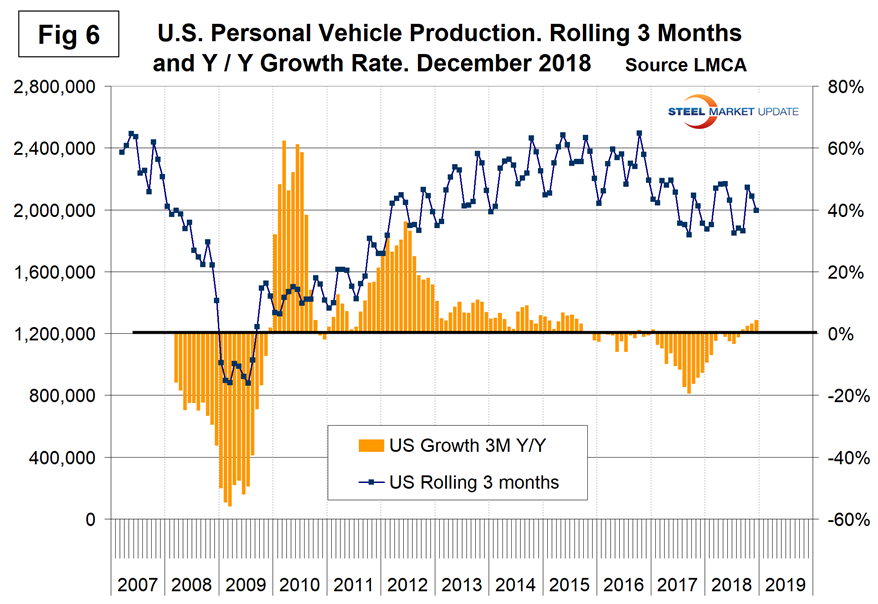
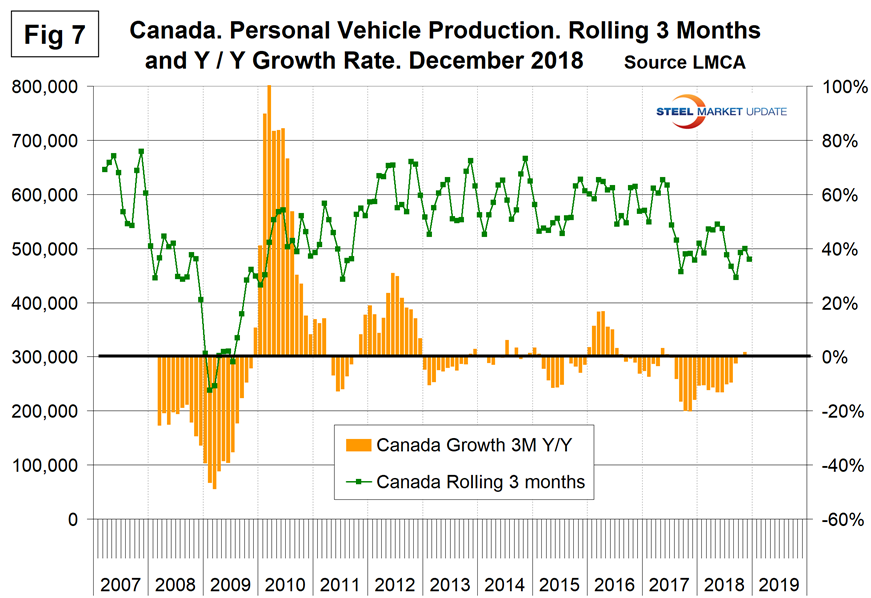
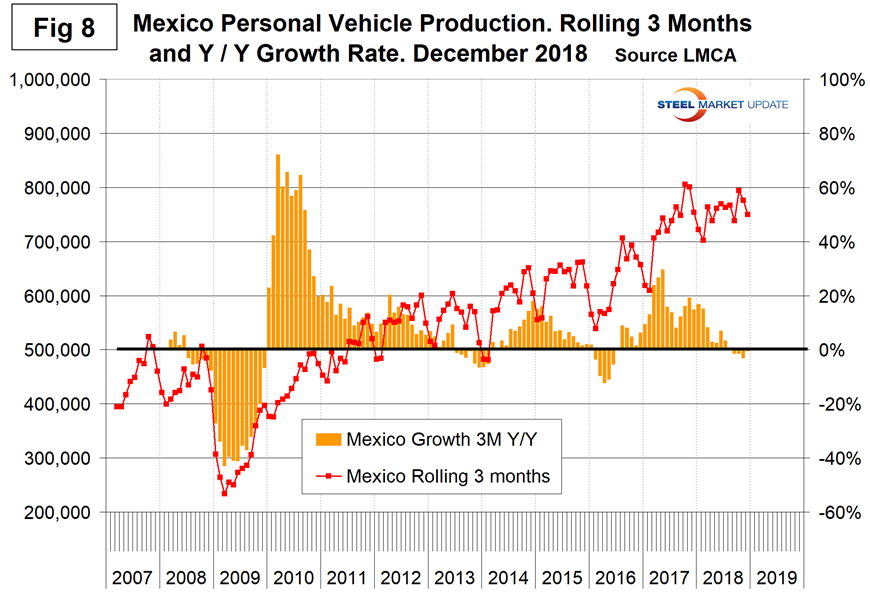
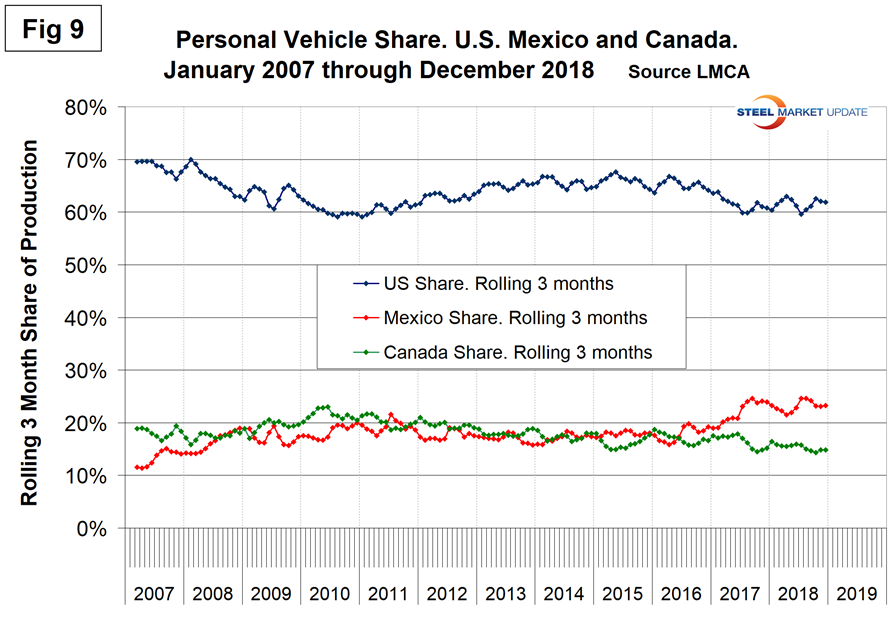
Figure 10 shows the total commercial vehicle production for North America and the total for each nation. The U.S. has held its ground much better in commercial vehicles than in the personal segment.
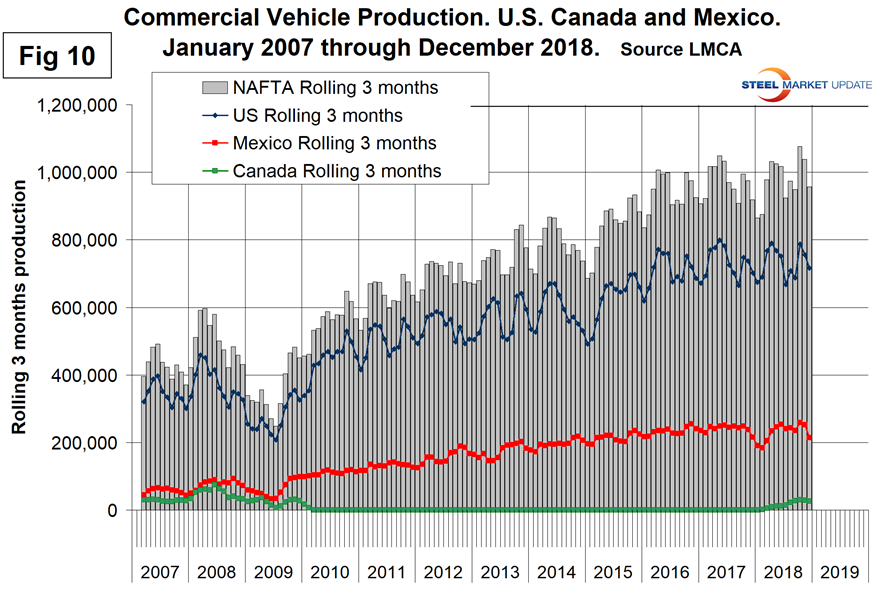
Figures 11, 12 and 13 show the production of commercial vehicles by nation and the year-over-year growth rate for each. Figure 14 shows the production share for each nation. Commercial vehicle production in Canada was zero from January 2010 through January 2018. The only Canadian plant making commercial vehicles in the past couple of decades was in Oshawa. At the end of 2009, they shifted their production from Silverado pickups to make the Chevy Camaro. That changed again in February 2018 when the Oshawa plant shifted away from the Equinox (personal vehicle) and again began to produce the Silverado and Sierra (both commercial vehicles). Last month, GM declared their intention to permanently close the Oshawa plant.
Both the U.S. and Mexico have achieved strong growth in commercial vehicle assemblies since the recession and their production shares have been stable and almost a mirror image of each other in the short term. Mexican exports of light vehicles hit a record in 2017 at 3.1 million units with the U.S, at 2.3 million units, being the primary destination. Mexico currently exports about 80 percent of its light vehicle production. Canada is the second highest volume destination.
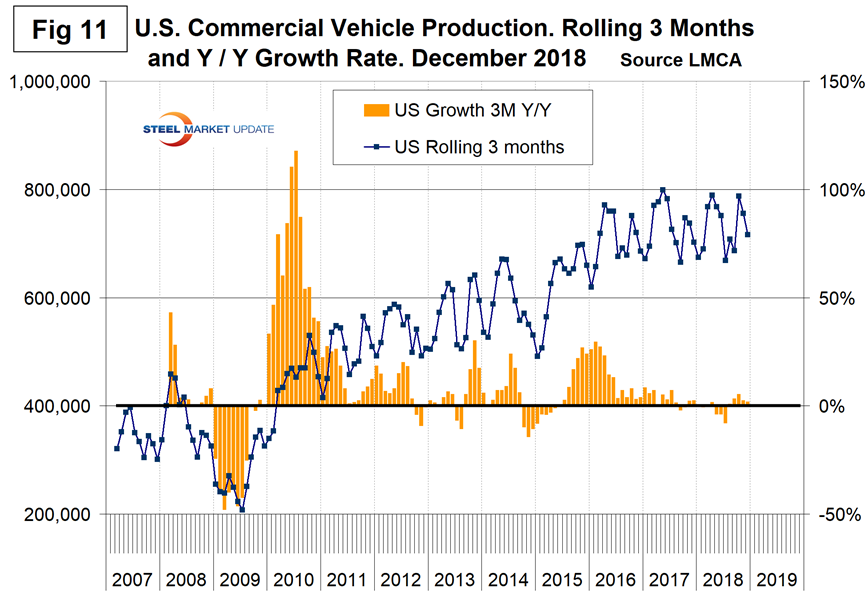
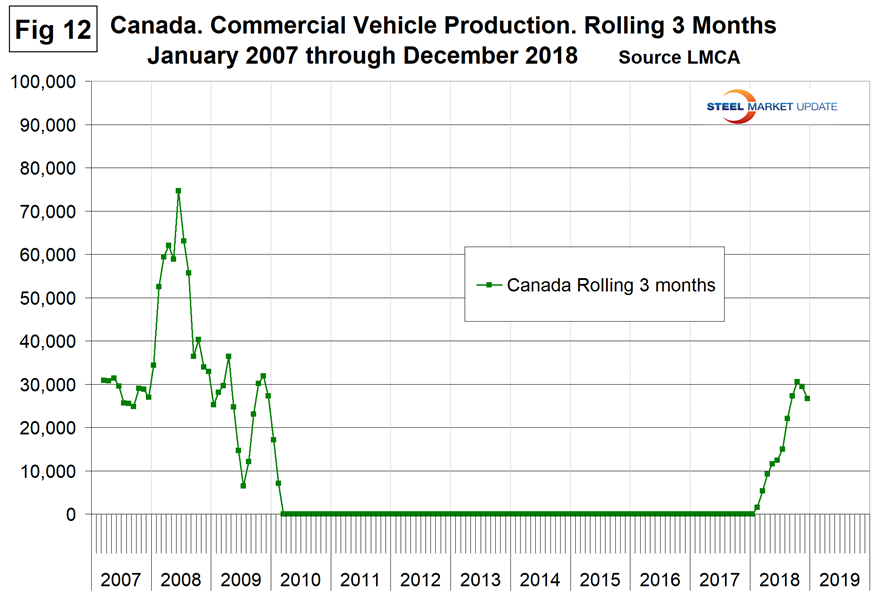
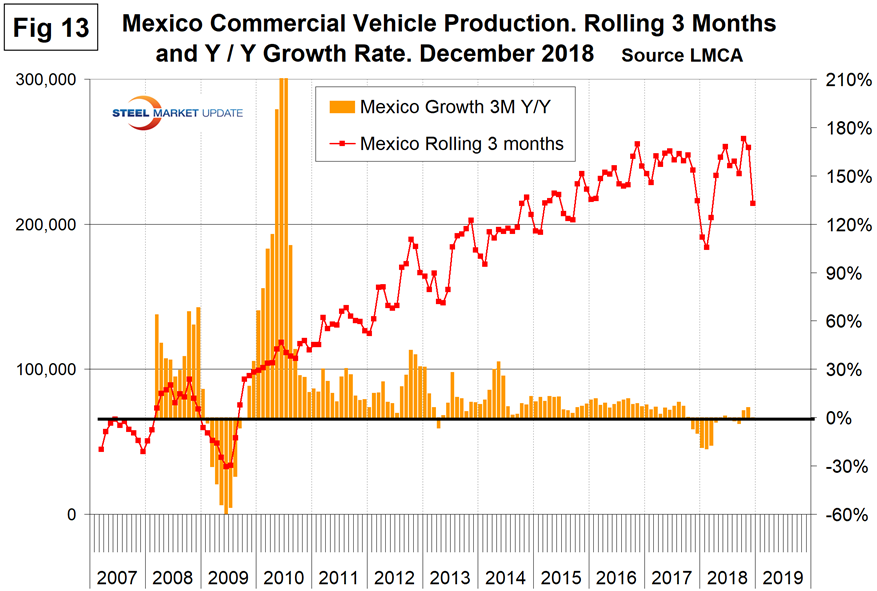
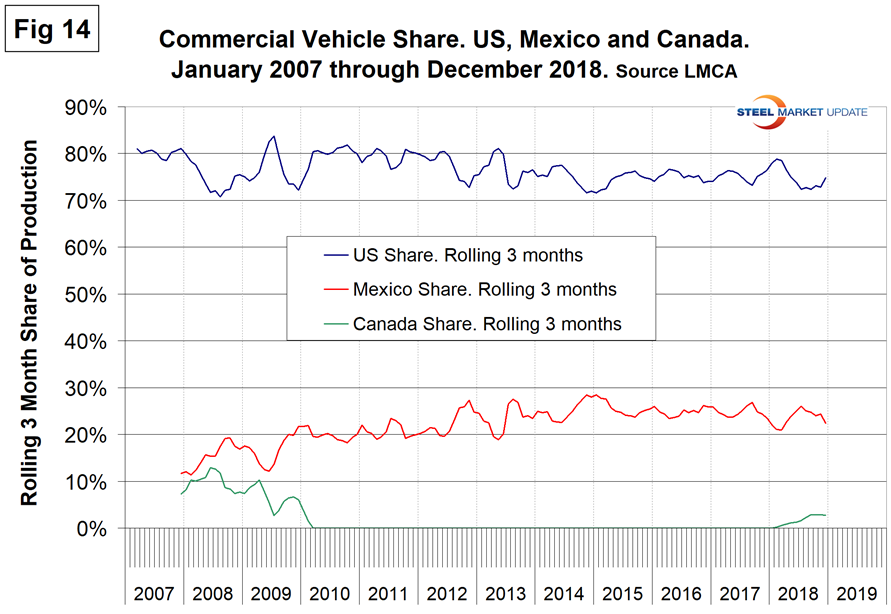
SMU Comment: North America experienced the normal December slowdown in vehicle assemblies. Mexico has been taking share of personal vehicle production but not of commercial vehicles. It remains to be seen whether the renegotiated North American trade agreement will result in a move in production share to the U.S.

Peter Wright
Read more from Peter WrightLatest in Steel Markets

CMC looks beyond Arizona micro-mill woes to long-term viability of construction mart
Despite the economic and geopolitical upheaval of the last five years, CMC President and CEO Peter Matt points out that the construction market has been an essential element of the way forward.

US importers face stricter rules under revamped S232 tariffs
“CBP expects full compliance from the trade community for accurate reporting and payment of the additional duties. CBP will take enforcement action on non-compliance," the agency said in a March 7 bulletin.

Steel exports rebound in January
US steel exports recovered to a five-month high in January after having fallen to a two-year low in December. This growth follows four consecutive months of declining exports.

Construction spending drops marginally in January
Construction spending edged down slightly in January, slipping for the first time in four months. The US Census Bureau estimated spending at a seasonally adjusted annual rate of $2,196 billion in January, down 0.2% from December’s downward revised rate. The January figure is 3.3% higher than a year ago. January’s result, despite the slight erosion, […]

HVAC equipment shipments slow in December but strong annually
Shipments of heating and cooling equipment in the US fell to an 11-month low in December, according to the latest data released by the Air-Conditioning, Heating, and Refrigeration Institute (AHRI).
